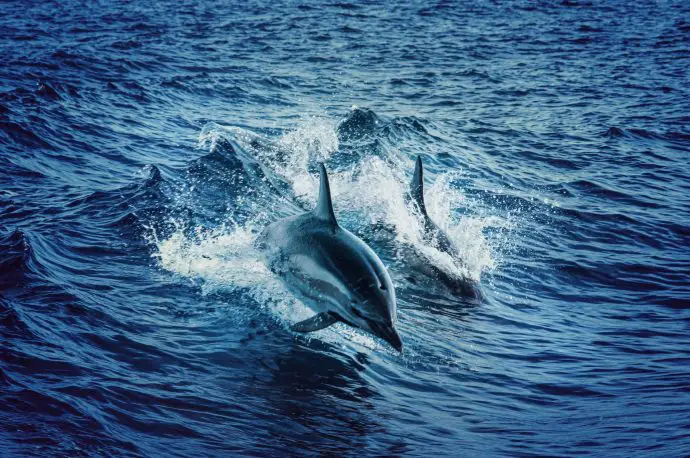Oceans and rivers cover more than two-thirds of planet Earth, so it is pretty likely that they are home to a whole world of weirdness yet to be discovered. Until us tiny humans are capable of exploring the underwater wilderness, it will be impossible to observe and document all of it. So far, we have only scratched the surface of the wonders that this water world holds. Here are a few of the weird things that scientists have recently found out.
Dolphin names
Contrary to what you might think – that dolphins are just fish that make clicky sounds at one another – it is now believed that these marine mammals are capable of assigning names to one another. Specifically, bottlenose dolphins are thought to have brains large enough to hold complex conversations and recognise other individuals in their pod using an assigned moniker. Until scientists can decode the dolphin language of clicks and snorts, we won’t fully comprehend the scale of these familiarities: for instance, which dolphin is Bert and which is Ernie. Whatever the case, researchers have seen enough to determine that dolphins are far more social and intelligent than previously believed.
Source: Pexels
The dolphin has already endeared itself to us with its familial, near-human intellect and playful demeanour. Dolphins have become icons in popular culture in their own right, from appearances in Family Guy and The Simpsons to representing the Miami Dolphins as a mascot. Many of those who like to play slots online at Aspers.com target the dolphin symbol on the reels of Novomatic’s Dolphins Pearl Deluxe, choosing the dolphin theme over any other of the site’s more than 400 slots games. Meanwhile, dolphins are regarded in shamanic and other spiritual cultures as sea guardians, nature’s diplomats and as vessels for the human soul. As we seem to relate so much to dolphins, how long will it be before we are communicating openly with these incredible animals?
Shrimp hearts
It may not surprise you to learn that these small crustaceans have hearts. What else would pump their blood (yes – they have blood, too) around their body? But it will surprise you to learn that the heart of the shrimp is in fact located not in the thorax of its body, but in its head.
When you think about it, it isn’t quite so weird as it first seems. Proportionate to their bodies, shrimps have far larger heads than we do, and even human hearts are located pretty close to the head. The organ needs to be located within shooting distance of the brain, which runs the show, in order to ensure that one can maintain the other reliably.
Croc growth
Human beings tend to have stopped growing by the time we reach 25 years of age. By all accounts, this is quite a lengthy period of growth when compared throughout the animal kingdom. But we are not the kings of the extended growth spurt, as it turns out.
Crocodiles and American Alligators have been found to continue growing until they reach the age of 33. That must mean some gnarly growing pains when you consider their tough outer scales. It may also explain why they are so massive and frightening, making them the top predators in swamps and rivers.
Source: Pexels
Salt and fresh-water animals are fascinating to behold in the wild and even more interesting once we start to uncover their quirks. Be sure to look out for fresh research on sea and river creatures to see what’s new with all things aquatic.


